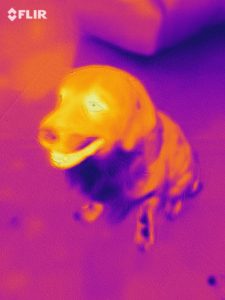Windows, known as fenestration in code books, can make a big impact on occupant comfort and energy costs. National Fenestration Rating Council creates the test standards and labeling for windows. The standard NFRC label covers U-Factor, Solar Heat Gain Coefficient (SHGC), visible transmittance and air leakage. Window labeling is mandatory for new installations, additions, and alterations.
U-Factor: U-Factor is a measure of how much heat moves through the entire window assembly which includes the glazing and the frame. U-factor is similar to R-value but R-value only refers to one piece of an assembly, versus U-factor is all the components in the assembly. The lower the U-factor the better the window. To get a comparison you can convert U-factor to R-value:
R-value = 1/U-factor
0.30 current U-factor requirement for California Title 24 Part 6
R-value = 1/0.30
R-value = 3.33
The 2022 prescriptive requirement for walls in single family homes is 0.048 U-factor or a whole assembly R-value of 20.83. Its easy to see how even high performing windows will quickly reduce the buildings overall insulation value. The more wall area taken up by windows that are only R-3.3 instead of the framed and insulated wall at R-20.83, the harder your air conditioner will have to work to remove the extra heat those windows are letting in. You want a low U-factor in a heating or cooling climate.
Solar Heat Gain Coefficient (SHGC): SHGC measures how well a window rejects heat. This is a benefit in climate zones where you use more air conditioning than heating. Windows with a low SHGC are preferred in climate zones where the main electrical load is air conditioning. If you are in a cold area then a window with a high solar heat gain would be a benefit, allowing the suns heat into the building will reduce the loads on the mechanical heating system. California 2022 Title 24 Part 6 will require 0.23 SHGC for windows in single family homes in climate zones 2, 4, and 6 through 15.
Visible Transmittance (VT): VT is a measure of how much visible light the window allows in. Energy efficient windows typically require coatings or materials which reduce light transmission. There has to be a balance between the light transmission, energy savings and the need to provide electric lighting to inhabitants indoors.
Air Leakage: Air leakage measures how much air will infiltrate or exfiltrate the windows under normal installation conditions. Air leakage cannot exceed 0.3 cfm per square foot for residential doors and windows.
Window films can be a cost effective upgrade to existing windows where the replacement costs are prohibitive. Make sure you use a quality NFRC rated product and have it installed by a professional or you can even do it yourself. Watch enough youtube videos and who knows what may get into…..



